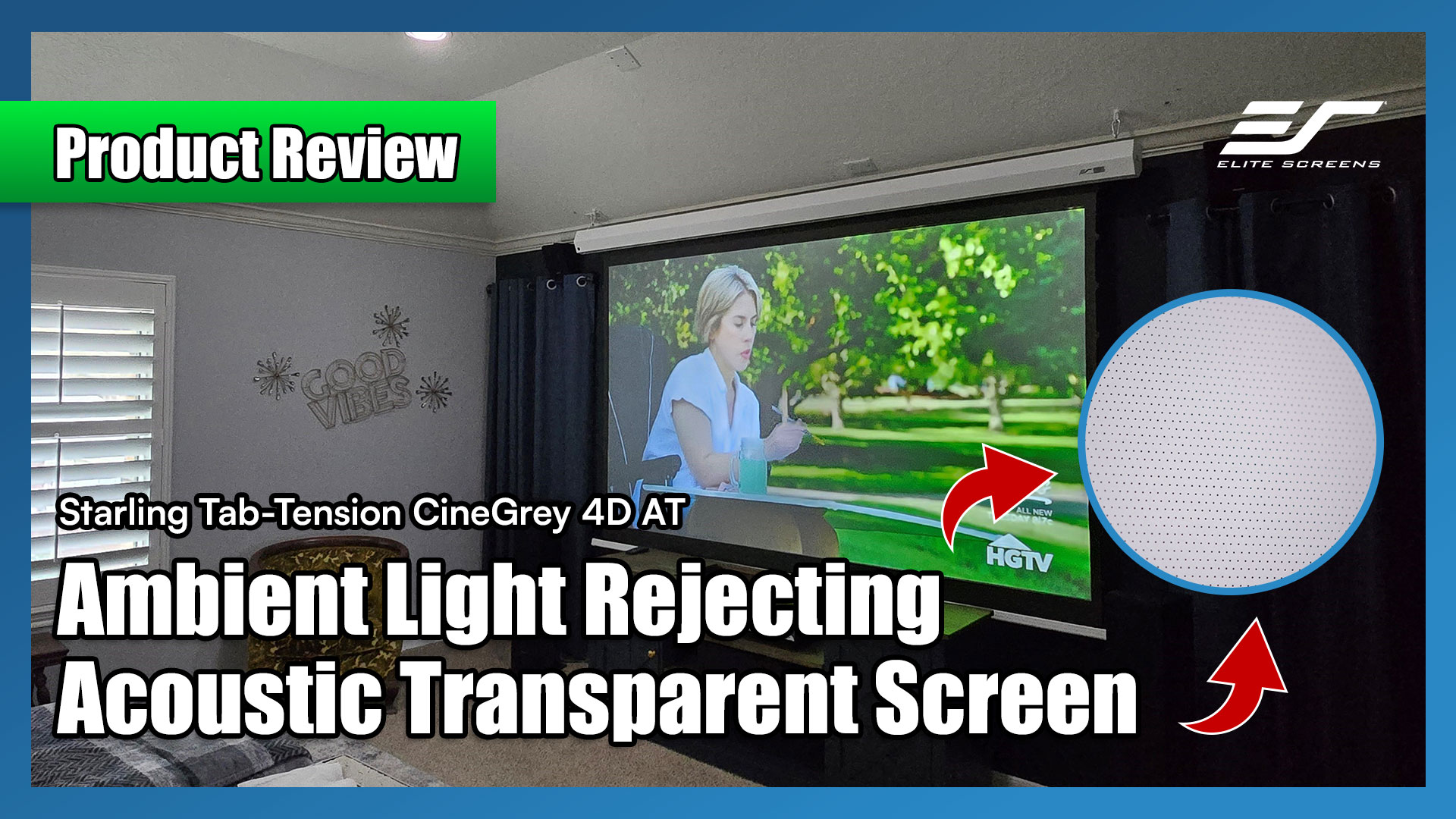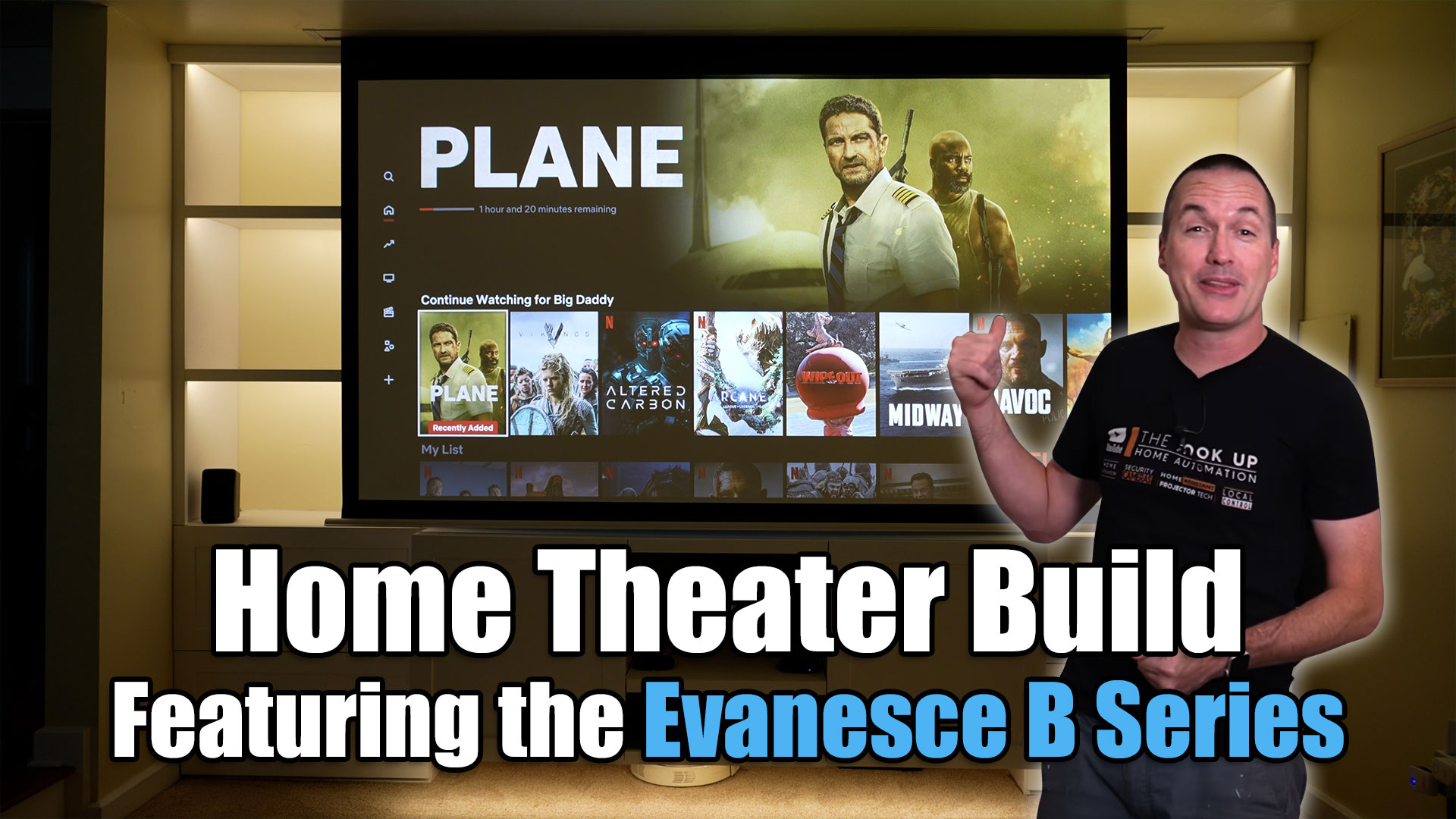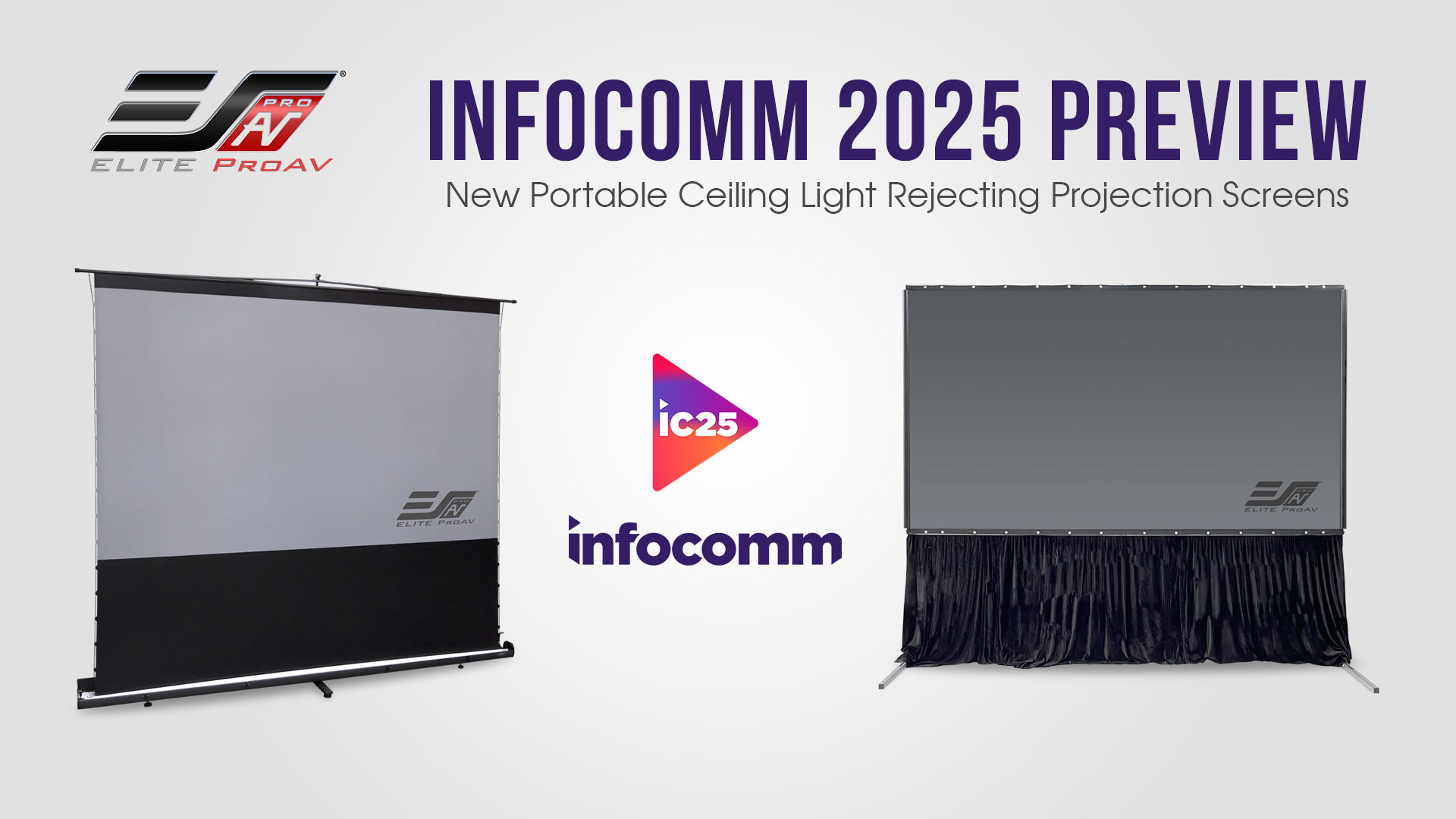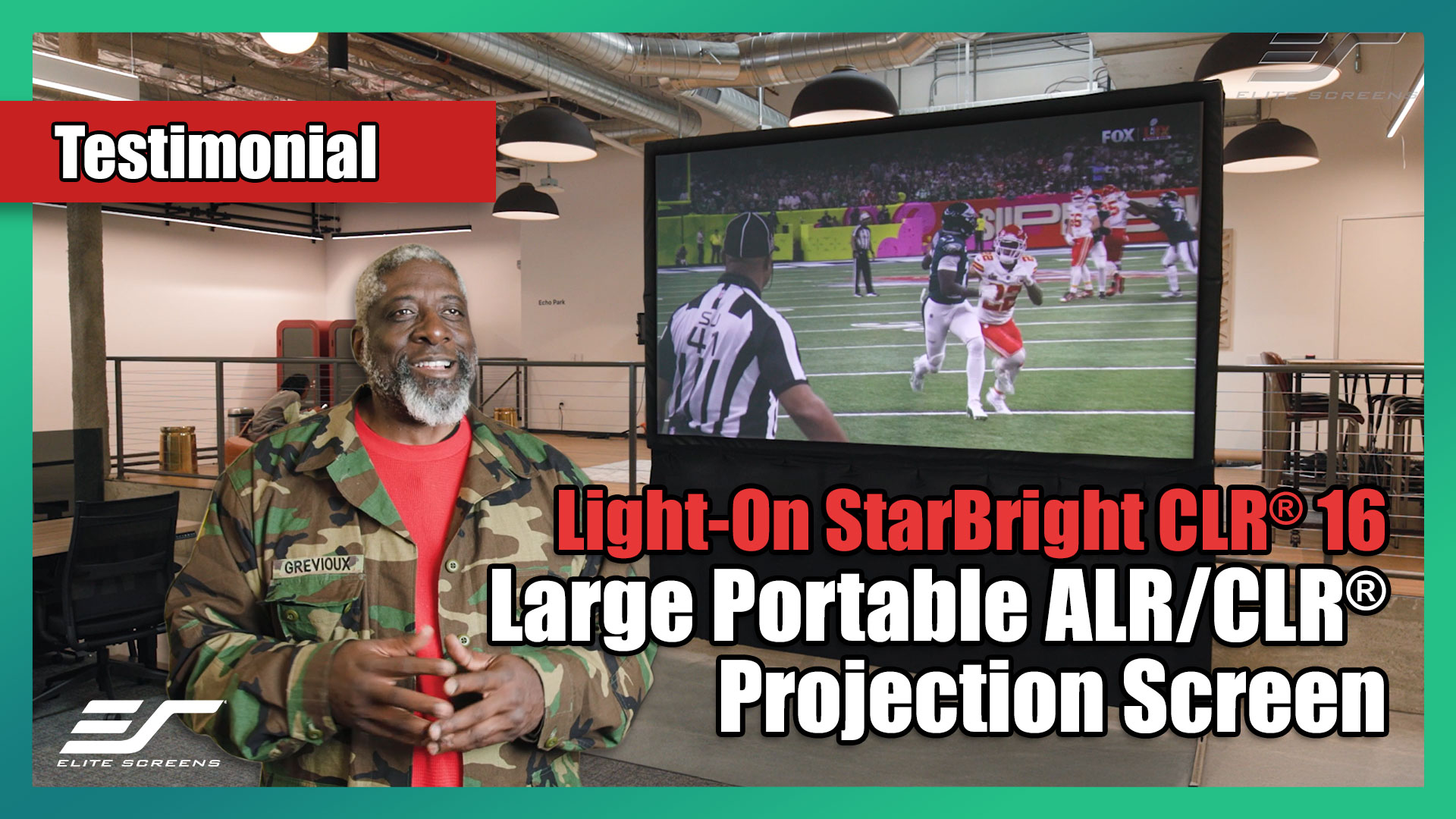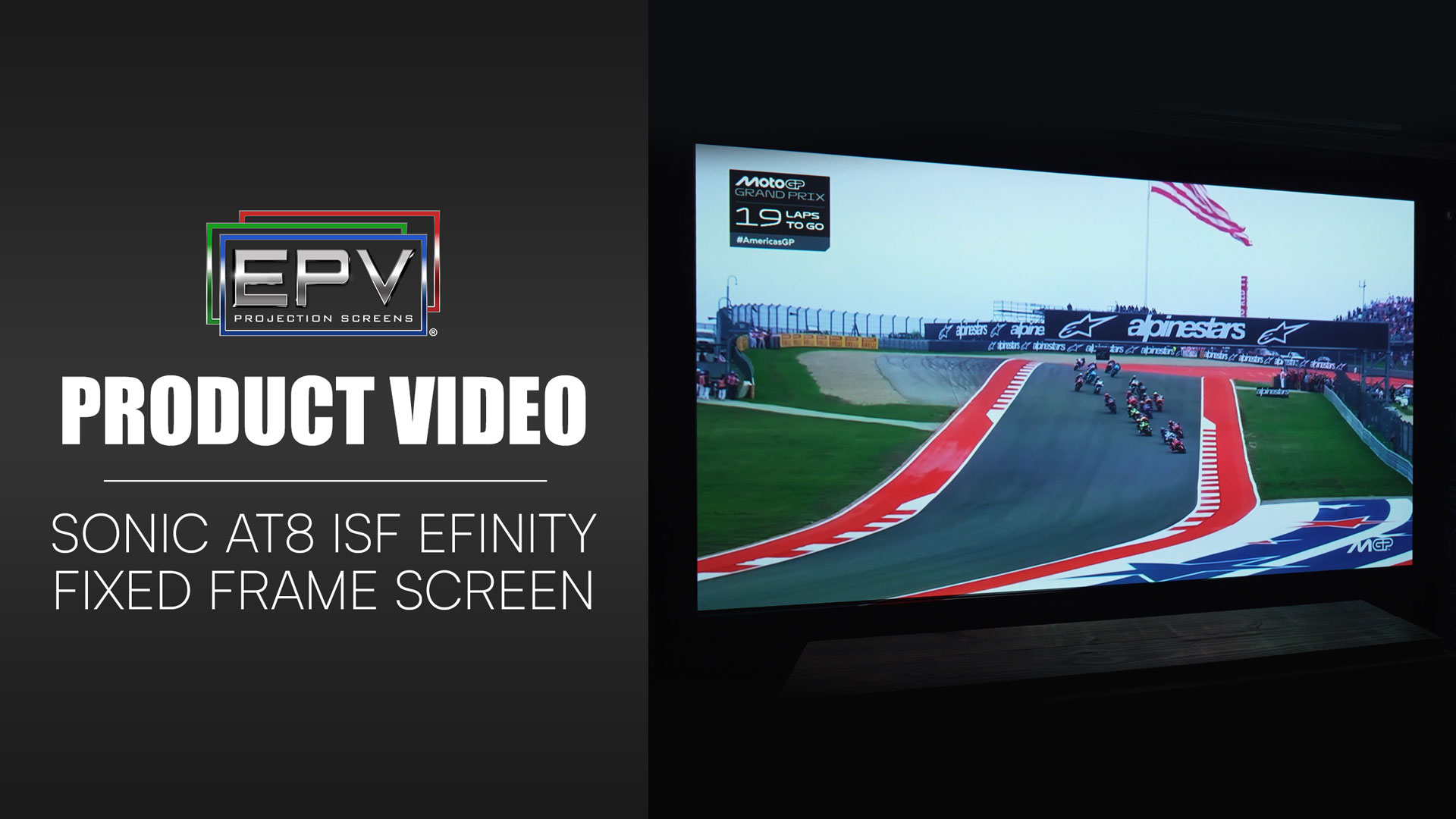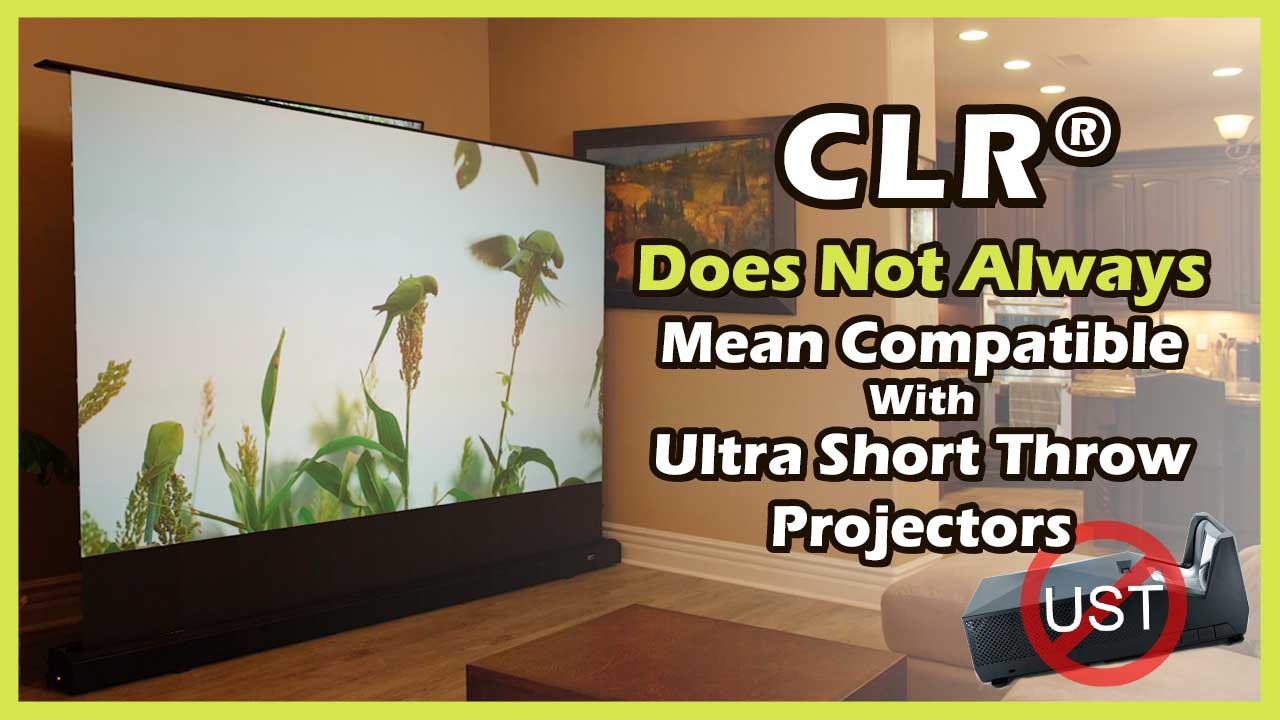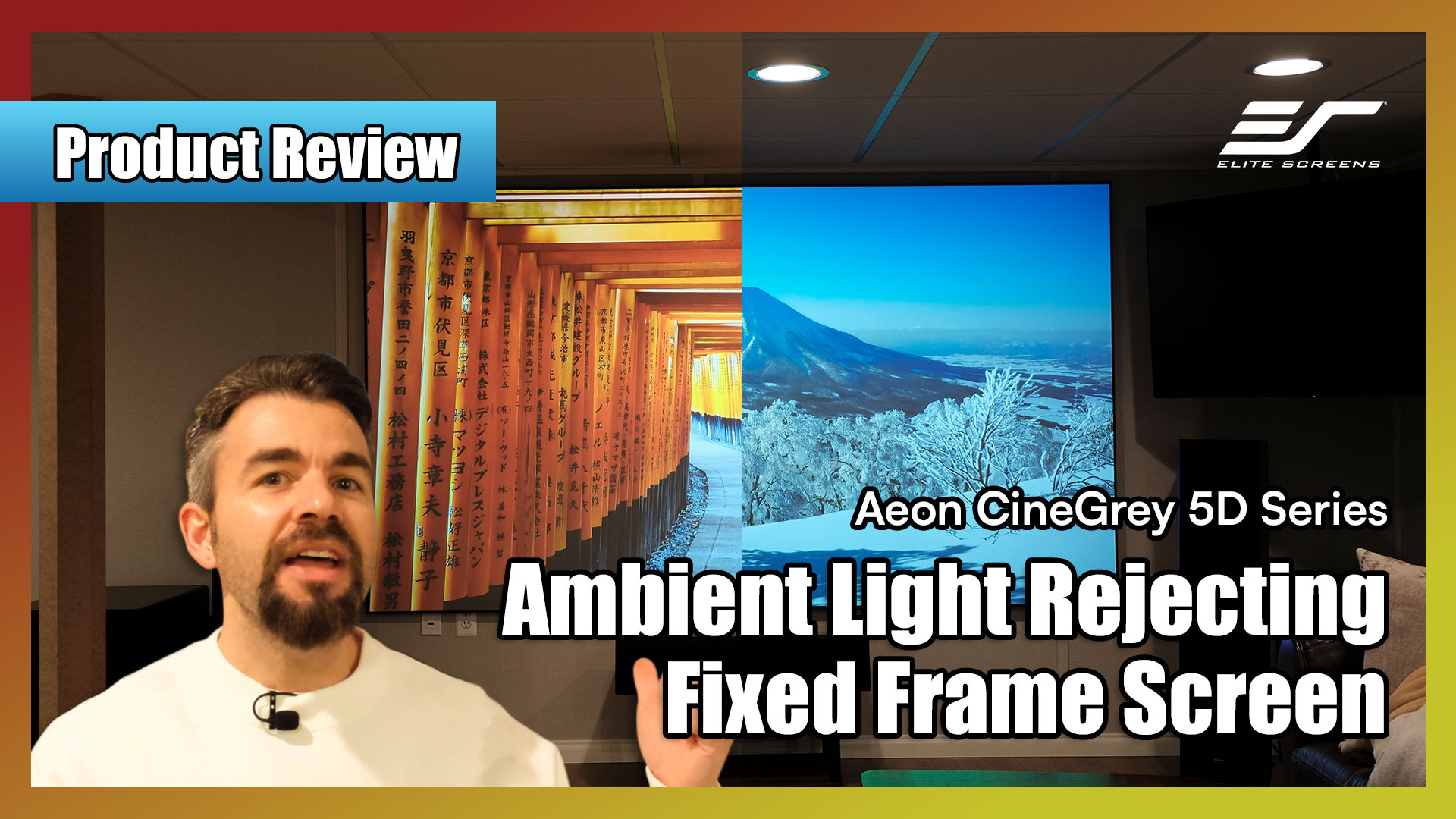By Dave Rodgers (Marketing Manager of Elite Screens & EPV Screens)
Intro, “How exactly do ‘ambient light rejecting’ materials actually ‘reject’ an indirect light source and why do we love the concept?”
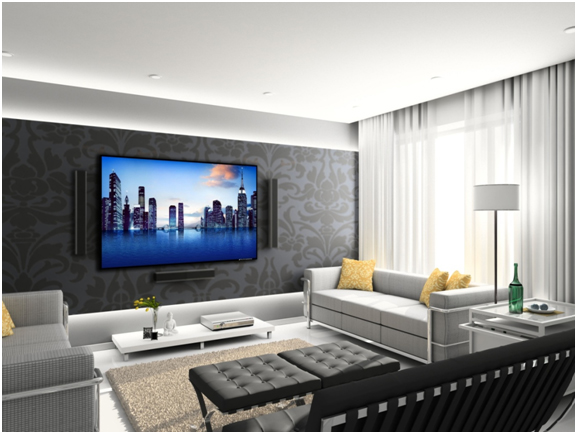
Ambient light allows us to see the world. From the moment of our first breath to our final sigh, the waking hours of our lives are bathed in ambient light. Think of your best days under the sun; the warm rustic glow of candles and firesides, or the countless light bulbs that have illuminated your path through all these years.
Of all the phenomena in this great universe, it has contributed so much to the quality of our lives. …Unless you are trying to get a good picture on any large video display, then it is just too darn bright. Once again, the old adage proves correct that “you can have too much of a good thing.”
The term “Ambient Light Rejecting” is part of the AV industry nomenclature as a screen feature that prevents ambient light from washing out an image. There are AV purists out there who hate the use of the word “Rejecting” and technically, they are correct. “ALR” does the opposite of reject, it either absorbs or diverts ambient light away from the viewer’s field of vision.
So why say ALR? Simple, “Ambient Light Rejecting” gives customers an easy mental image of a screen that gets rid of ambient light and its washout effect. Also, “Angular divergent reflectivity of indirect light sources within an absorbent active matrix to mitigate the intrusive effects of luminous inundation onto projected images”, is too much of a mouthful and every Marketing Team out there hated it. Besides, “Ambient Light Absorbent” sounds like something you clean your kitchen floor with.
So what is Ambient Light?

To AV Installers, ambient light is any atmospheric lighting that originates from an indirect source of luminance that can be inside, outside, naturally or artificially occurring. Basically, it’s any light source other than your projector that threatens to wash out your image or otherwise impair its visual aesthetics. This includes but is not limited to light coming through windows and skylights from an outside source, track lighting, in wall/ceiling lights, lamps, candles, fireplaces, or even the light of your own video screen reflecting off light-colored surfaces in your room.
It is surprising but true; light colored walls, ceilings and flooring can all contribute to ambient light problems and negatively affect your video performance. When projected light bounces off your screen, it turns every surface in your room into a potential reflector that will in turn contribute to washing out your projected image. So yes, dressing up like Mr. Roarke and watching Fantasy Island episodes in a room lined with white marble floors, alabaster walls and a whitewashed ceiling is far from ideal for getting the best out of your projector screen. Next time, think Knight Rider instead.
So how is Ambient Light a problem and how do we “Reject” it?
The bottom line is that most rooms do not have 100% control over environmental lighting. As cool as a fully contained home theater room is, most households don’t have them. Instead, homes are trending toward having large projection screens in living rooms, dens, and media rooms as a means of replacing the household television set with a larger than life +100” screen. This is entirely feasible as long as you take the needed steps to counter the washout effects of ambient light.
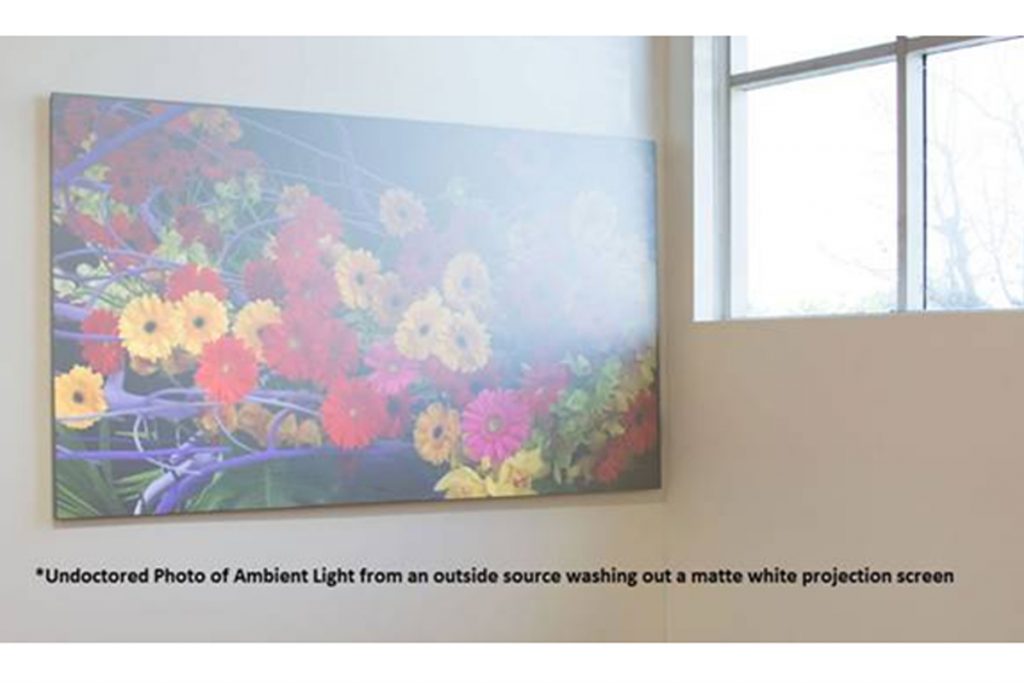
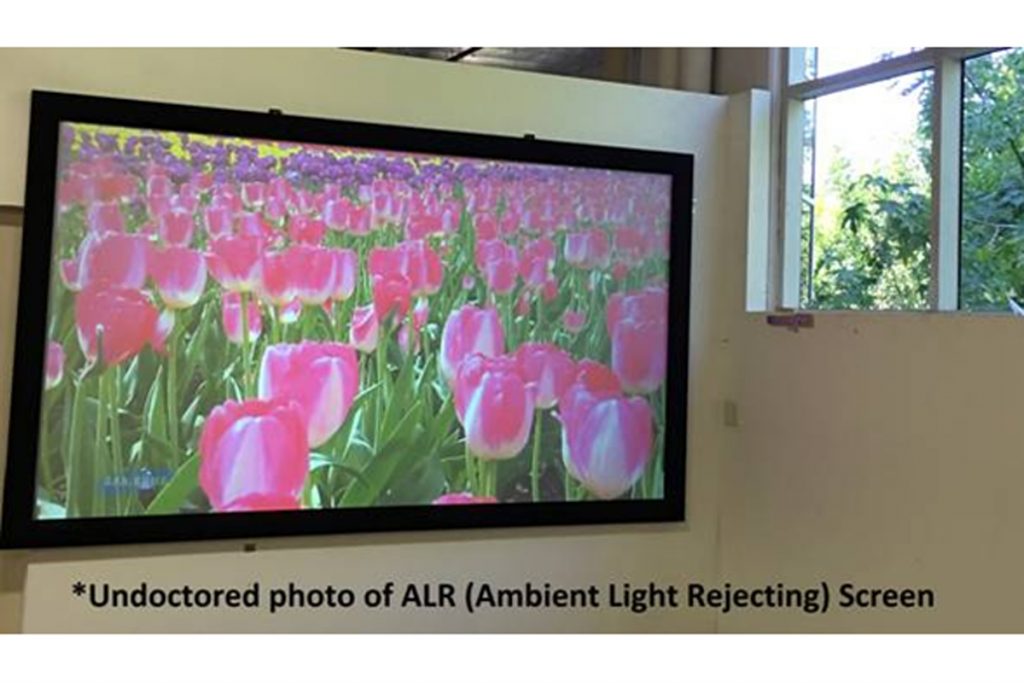
To some degree, a brighter projector does help. The extra brightness drowns out a little more of the milky white glare of indirect room lighting but it does bring with it a negative effect as well. As much as you want a bright, colorful image, you don’t want it too bright or your contrast suffers. An excessively bright screen can also cause eye discomfort so a more practical solution is necessary. Instead of thinking about a brighter projector lamp, you may need a specialty projection screen instead. Ambient Light Rejecting screens come in two basic formats. Either they will be Retro Reflective or Angular Reflective. According to the Law of Reflection, “…the incident ray, the reflected ray, and the normal to the surface of the mirror all lie in the same plane and that the angle of reflection is equal to the angle of incidence.” ALR surfaces may not t fully react in accordance with the Law of Reflection because they add their own variables, which are either microstructures or multi-layered optical filters. Normal white projector screens have Diffusion Uniformity that scatters the projected light to provide uniform brightness over the full 180° of the projection angle. However, it scatters all light, not just the projected signal so high levels of ambient light will wash out the image on a standard white screen.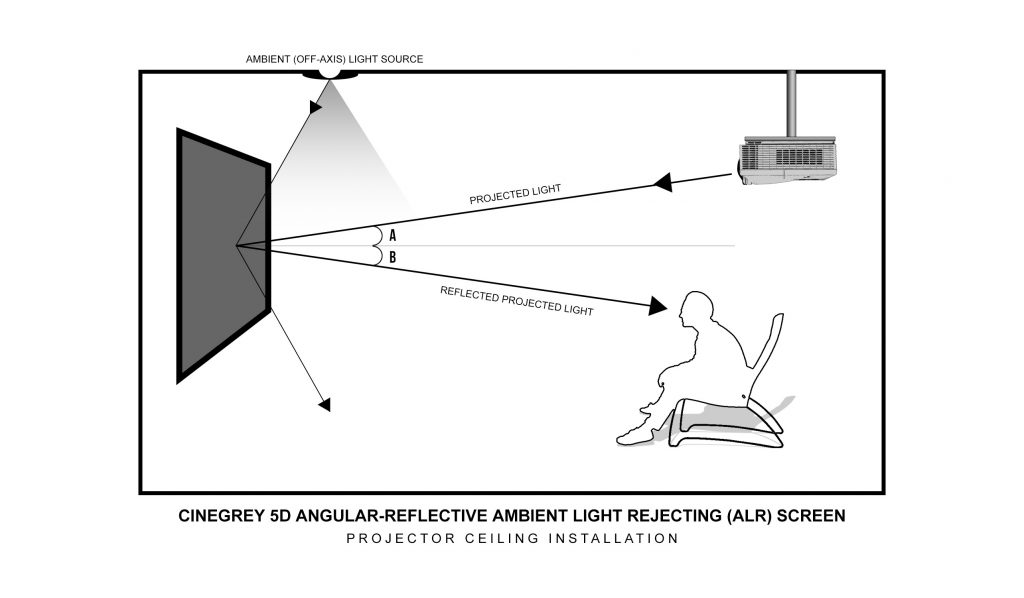
Angular Reflective means that light reflects off the surface at precisely the opposite angle of incidence exactly as the laws of reflection describe and as the diagram to the right illustrates. This type of screen is the preferred model for commercial applications but also widely popular with residential applications as well. The material prevents full diffusion from occurring to provide greater control over the washout effects of ambient light. The focused reflectivity rewards viewers with a bright projected image that achieves a superb level of color temperature. At the same time, off-axis light is diverted away from the viewer’s range of visible perception. Its multiple layers of diffusion material further negates the washout effects of ambient light while also enhancing black levels for sharp image clarity.
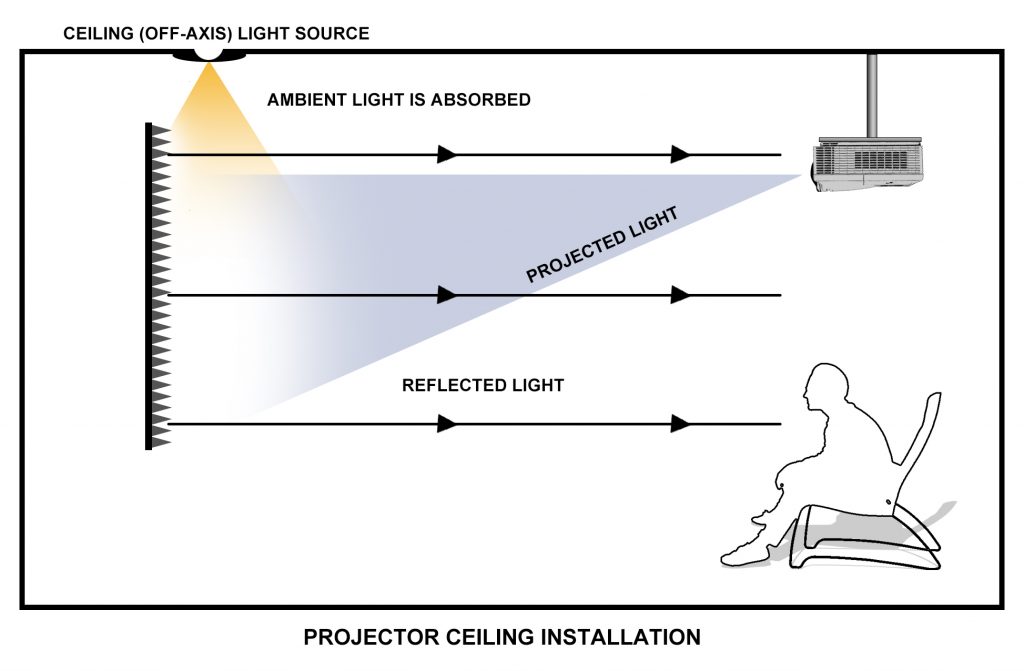
Retro Reflective means that the material will reflect back the image direct to the light source. This limits the options of projector placement but its performance levels are so superb, this format is typically the overall favorite of home theater aficionados.
A Retro Reflective Ambient Light Rejecting screen essentially absorbs ambient light away from the viewer’s field of vision. The screen is capable of doing this by means of an active microstructure design. In English, this means that the actual reflective surface of the screen has been structured down to a microscopic level in order to reflect the projected image directly into the viewer’s field of vision while absorbing the majority of all other indirect light.
When a cross-section of the active retro reflective material is viewed, it is revealed that the reflective surface actually has a serriform or “saw-tooth” microstructure. This structure acts as a funnel to concentrate the direct light of a projector back in a narrowed angle of reflection that is comparatively a small “pie-slice” of the 180° brightness of diffusion uniformity. At the same time, indirect light is either absorbed in the dark saw-tooth formations seen in the picture or otherwise cancelled out by the diffusion layers.
Light coming from the projector must hit the material in direct alignment with the screen’s level center without being off by more than a 5 angle. Any vertical off-axis angle of projection greater than that will be reflected off at so extreme an angle that it will not come into the viewer’s field of vision.
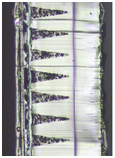
How do I calculate this?
There are two steps you must take and here they are:
- Know where and how your screen should be positioned in accordance to where your viewers shall be.
- Make sure your angle of projection is correct regardless if tabletop or ceiling mounted.
Here are the basics in positioning your screen.
Viewing – The optimal alignment with the human eye should be with the bottom third (1/3) of the screen’s overall height.
*Note, the average height of the human eye level is 50 inches (127cm) seated and 60 inches (152.4cm) standing. Seating – The optimal viewing distance from which one can comfortably view a projection screen is 1.5 times the screen’s actual width.
Normally, you can use dead reckoning to gauge a reasonably good vertical projection angle inside of 5 degrees. However, if you insist on doing the math, here is the way to calculate your angle as follows:
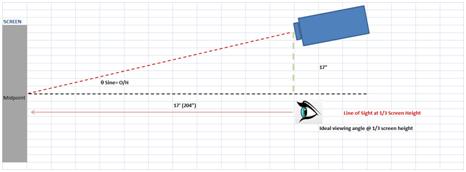
Pretend your projector is 17’ (204”) from your screen & 17” above the screen’s center.
- Find the diagonal measurement (red dotted line) using the following equation. Square the two measured distances and add them together; then get the square root of the solution.
- 204² + 17² or (41616 +289= 41905) then √(41905) = 204.7”
- Your diagonal is roughly 205”.
- Using a scientific calculator, divide your vertical (17”) by the diagonal (205”) = 0.0829268…
- Calculate the Arcsine using the inverse key ( sin−1)
- Your answer is 4.75°
- Since the angle is within 5° of the projector’s vertical axis, this installation is appropriate for a Retro Reflective Material.
Here’s Why You Should Love the Concept
ALR enables the viewer to maximize the effects of optimal contrast and ISF Certified Color Temperature while enhancing brightness while filtering out ambient light. This creates a realistic image that allows 4K content to be appreciated in its full glory with the lights on or off. Color is more defined; the sharpness and image clarity of high resolution (UHD and 4K) content is more defined
-DR
About the Aeon Cinegrey 3D
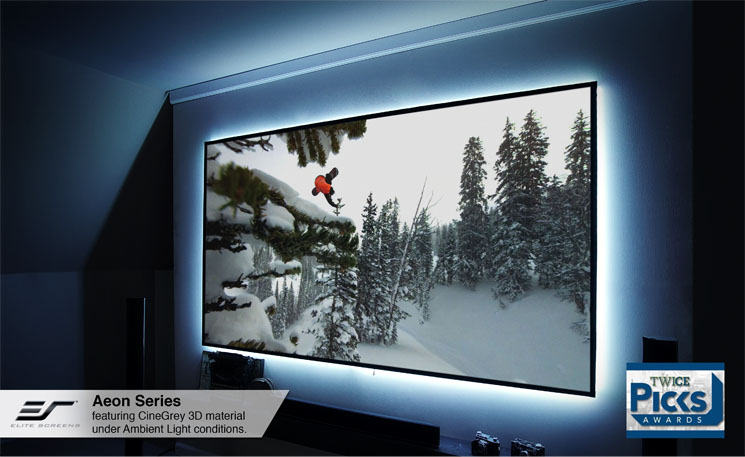
CineGrey 3D is a reference quality front projection screen material formulated for environments with minimal control over room lighting. It was designed to enhance picture brightness, offer accurate color fidelity, and improve contrast levels. The CineGrey 3D is best for family rooms, educational facilities, conference rooms or any applications in which incident light is a factor. Typical matte white surfaces wash out the images when ambient light cannot be controlled. The CineGrey 3D is the best choice for having a projected image with a balanced color temperature and contrast under such conditions.
